Snowflake, Summer Snowflake (Leucojum aestivum) is a beautiful flowering plant from the Amaryllidaceae family, native to regions spanning Europe to North Iran. This bulbous perennial is a popular choice for gardens due to its elegant appearance and ease of care. Typically growing to a height of 35 to 60 cm, some varieties can reach up to 90 cm, adding a touch of charm and structure to garden beds. Its natural resistance to deer and rabbits makes it an excellent option for gardeners seeking low-maintenance and resilient plants.
| Common name | Snowflake, Summer Snowflake |
| Botanical name | Leucojum aestivum |
| Family | Amaryllidaceae |
| Species | aestivum |
| Origin | Europe to North Iran |
| Life cycle | Bulb |
| Plant type | Bulb |
| Sunlight | Deep shade |
| Soil condition | Clay |
| Drainage | Moist but Well-Drained |
| Spacing | Less than 12 in. |
| Flowering period | Spring |
| Flower color | Green |
| Leaf color | Green |
| Fruit type | Capsule |
| Flower benefit | Showy |
| Garden style | Rock Garden |
| Uses | Lawn |
I. Appearance and Characteristics
Leucojum aestivum, commonly called the summer snowflake, giant snowflake, Loddon lily (see River Loddon § Loddon lily) and rarely snowbell and dewdrop among others, is a plant species widely cultivated as an ornamental. It is native to most of Europe from Spain and Ireland to Ukraine, with the exception of Scandinavia, Russia, Belarus and the Baltic countries. It is also considered native to Turkey, Iran and the Caucasus. It is naturalized in Denmark, South Australia, New South Wales, Nova Scotia and much of the eastern United States.
Leucojum aestivum is a perennial bulbous plant, generally 35–60 cm (14–24 in) tall, but some forms reach 90 cm (35 in). Its leaves, which are well developed at the time of flowering, are strap-shaped, 5–20 mm (0.2–0.8 in) wide, reaching to about the same height as the flowers. The flowering stem (scape) is hollow and has wings with translucent margins. The pendant flowers appear in late spring and are borne in umbels of usually three to five, sometimes as many as seven.
The flower stalks (pedicels) are of different lengths, 25–70 mm (1.0–2.8 in) long. The flowers are about 3–4 cm (1.2–1.6 in) in diameter and have six white tepals, each with a greenish mark just below the tip. The black seeds are 5–7 mm (0.2–0.3 in) long.
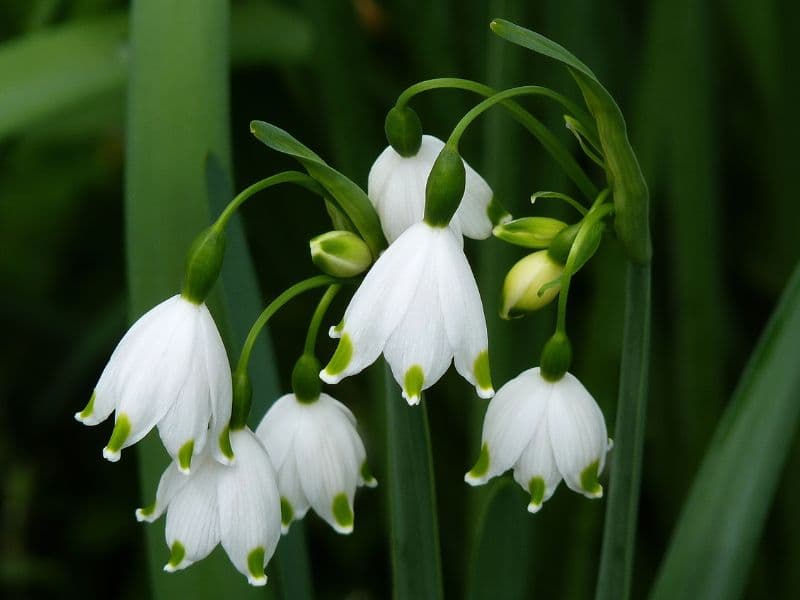
After flowering, the fruits develop flotation chambers but remain attached to the stem. In England, it has been recorded that flooding causes the stems to break and the fruits to be carried downstream and stranded in river debris or on flood-plains. The bulbs can also be transported during heavy floods and deposited on river banks.
All species of Leucojum are poisonous, as the leaves and bulbs contain the toxic alkaloids lycorine and galantamine.
II. How to Grow and Care
Sunlight
Summer snowflake does well in either full sun or light shade and can be planted under a tree in dappled shade or part shade.1 Unlike daffodils, its stems don’t lean towards the sun, but always stand straight up, so it’s pretty viewed from any side.
Temperature and Humidity
Snowflakes are adapted to USDA Zones 4 to 9 (that’s most of the U.S. down to the Gulf Coast). They aren’t bothered by humidity but require extra care and watering in a dry climate.
Watering
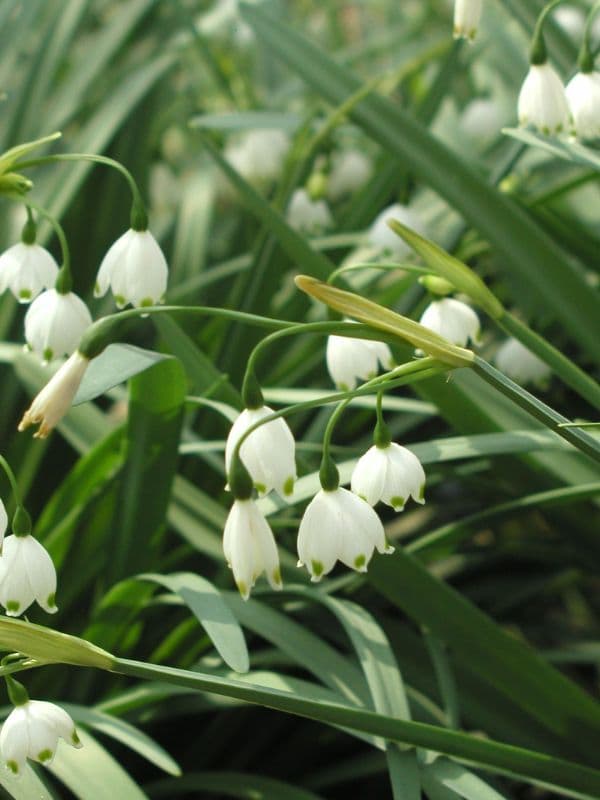
Snowflakes need consistent moisture while growing and blooming in the late winter and spring. Water if the soil dries out during the period your flowers are actively growing. Once they go dormant in summer, snowflakes can tolerate moderately dry soil. A 2-inch layer of mulch is helpful in retaining moisture in a location that is hot and dry in summer.
Soil
Summer snowflake grows best in well-drained, rich soils with medium moisture, but is quite tolerant of many conditions. Snowflakes can adapt to clay as well as moist soils along a streambank or pond—just make certain to plant the bulbs above the waterline.
Fertilizing
Snowflakes aren’t fussy and don’t generally require fertilizer, though they do best in rich soil. Consider adding compost or bulb fertilizer at the time of planting. If you would like to enrich the soil, you can add compost on top of the soil each year after the plants wither away.
Planting Instructions
The ideal location for summer snowflake is one that gets at least 6 hours of sunlight and has well-draining soil with a mildly acidic, neutral, or mildly alkaline pH.
Plant summer snowflake in the fall before the ground freezes. Plant the bulb 4 to 6 inches deep with the pointy side up and the root side down. Plant the bulbs in clusters of 15 to 20 or more bulbs, spaced 4 to 6 inches apart. Water the bulbs well after planting.
Pruning
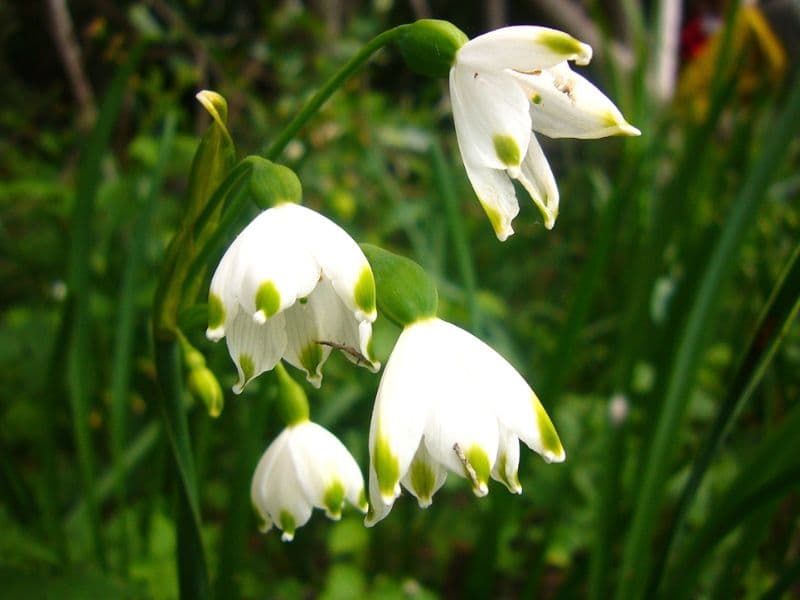
After blooming has ended for the season, it is vital that you do not cut the foliage back – the leaves create food via photosynthesis to strengthen the bulb for the coming winter and to store energy for the following year’s flowers. Once your summer snowflake has finished blooming, you may wish to cut off the dead flowers for aesthetic purposes, but this isn’t necessary. By mid-summer, the leaves will turn yellow and die as the summer snowflake enters dormancy. Once the leaves are dead, they can be removed.
Propagation
Deer and rodents will not eat snowflakes, so these long-lived treasures increase in numbers over time. Summer snowflakes prefer to be left undisturbed, but you can dig up, divide, and replant the bulbs if they outgrow their space. Wait until the foliage has turned yellow before you dig up a clump. Should you be the sharing sort, bestow extras on friends and family—a tradition that’s been going on for more than 400 years.
Potting and Repotting
Summer snowflake is not suitable for containers where the bulbs are subject to frequent temperature fluctuations and cycles of freezing and thawing, which is detrimental to the bulbs. Bringing them indoors for the winter is not a solution because, like many winter-hardy spring-blooming bulbs, they need cold winter temperatures to develop good root systems and grow foliage and flowers in the spring.
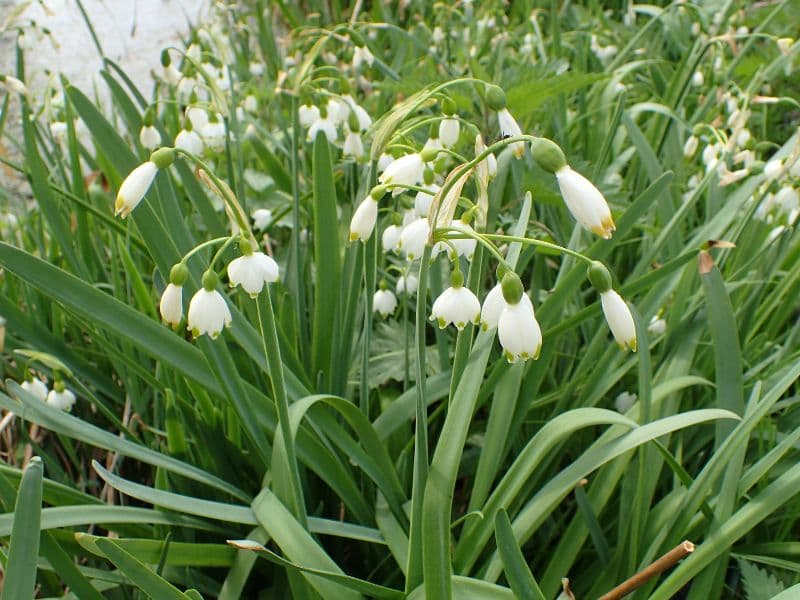
How to Get to Flower
Summer snowflake is a dependable and low-maintenance plant that should flower without special care. It does require sunlight to bloom, so don’t plant the bulbs in deep shade. Deadheading is not necessary on this plant. Blooms appear in late winter in the warmest climates up to early June in the coldest, so patience may be all that is required if your plant hasn’t bloomed yet. Like daffodils, snowflakes make an excellent cut flower. By spring bulb standards, it stays in bloom a long time—a couple of weeks.
Pests and Diseases
Summer snowflake is resistant to pests and diseases but can attract snails and slugs. The bulbs are deer-resistant.
III. Uses and Benefits
The summer snowflake is a popular ornamental plant often used in borders and to line walkways. The spring-blooming plant is prized for its long flowering time and fragrant flowers, and its long stems are enjoyed as cut flowers. The flowering plant is also resistant to rabbits and deer that can become pests in spring gardens.
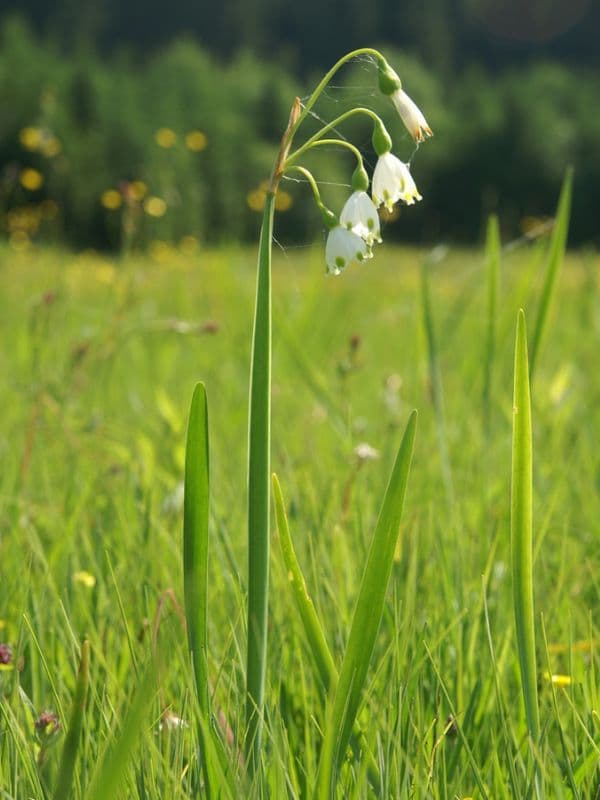
IV. Harvesting and Storage
When your summer snowflake is in bloom, you can cut off flowers for lightly-scented spring bouquets without fear of hurting your plant. The summer snowflake is often one of the first plants to flower in the spring, making it a popular addition to many a vase!
V. Types of Summer Snowflakes
The plain vanilla summer snowflake sports 18-inch stems, each carrying three to five, 1-inch, bell-shaped blooms with a green dot on the tip of each petal. I prefer the stately heirloom selection, ‘Gravetye Giant,’5 named for the estate of famous 19th-century garden writer and designer, William Robinson. Shown above, it’s taller, has larger blooms, and bears as many as nine flowers per stem.
Find Where to Buy the Best Summer Snowflake (Leucojum aestivum)





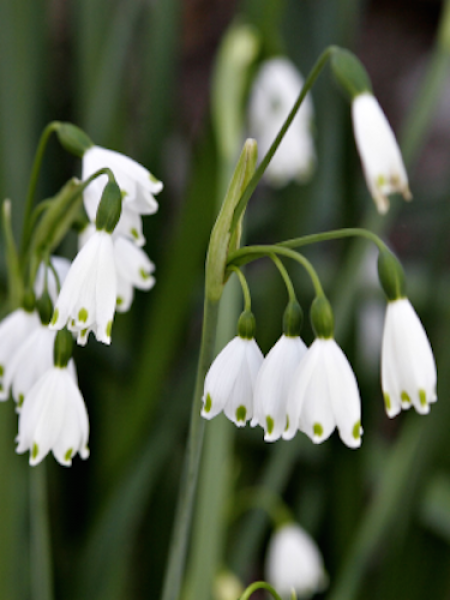

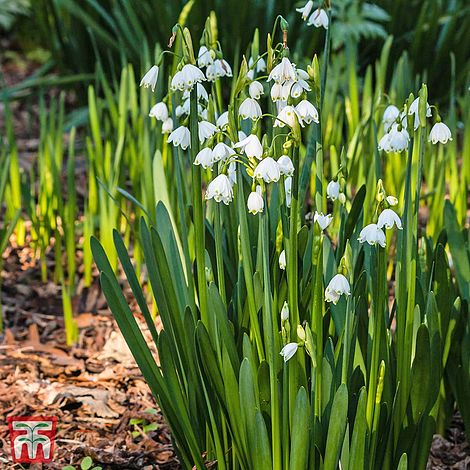










Leave a Reply